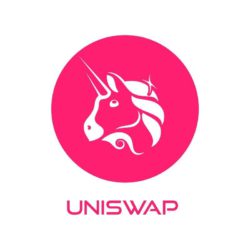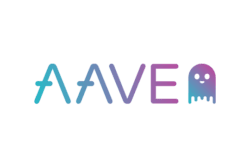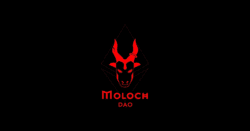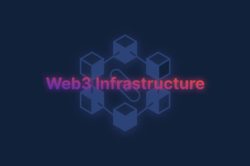DeFi Vs Web3: Deep Dive And Top Key Differences

The arrival of Web3 and decentralized finance (DeFi) marks a significant shift in the digital landscape, transforming the way we interact, transact, and engage with online platforms. Web3 represents the evolution of the internet, emphasizing decentralization, privacy, and user empowerment through the use of blockchain technology. Within this framework, DeFi has emerged as a groundbreaking application, revolutionizing traditional financial systems and enabling innovative decentralized solutions.
Web3 builds upon the foundation laid by Web1 and Web2. Web1 refers to the early internet, where information was primarily static and users had limited participation. Web2, which dominates the present era, introduced user-generated content, social media, and interactive web applications. However, it also brought centralized control, data monopolies, and privacy concerns.
Web3 seeks to address these limitations by leveraging decentralized technologies, most notably blockchain. Blockchain is a distributed ledger technology that enables secure, transparent, and tamper-resistant transactions and data storage. It eliminates the need for intermediaries, such as banks or centralized platforms, by enabling peer-to-peer interactions and consensus mechanisms.
One of the most prominent applications of Web3 is decentralized finance, or DeFi. DeFi aims to provide an open and permissionless financial system, accessible to anyone with an internet connection, without the need for intermediaries. Traditional financial services such as lending, borrowing, trading, and asset management are redesigned and executed through smart contracts on blockchain platforms like Ethereum.
DeFi offers numerous advantages over traditional finance. It enables financial inclusion by removing barriers, such as the need for a physical presence, credit history, or identification documents. Anyone with an internet connection can access and participate in DeFi protocols. Additionally, DeFi offers transparency and audibility, as all transactions and contracts are recorded on the blockchain and can be verified by anyone.
One of the fundamental building blocks of DeFi is decentralized exchanges (DEXs), which enable peer-to-peer trading of digital assets without relying on intermediaries. DEXs use smart contracts to automate order matching and asset swaps, allowing users to retain control of their funds. This eliminates the need for a trusted third party to hold assets, reducing counterparty risk and potential for hacks or theft.
Another key aspect of DeFi is lending and borrowing protocols. Through smart contracts, users can lend their digital assets and earn interest or borrow assets by collateralizing their existing holdings. These lending and borrowing platforms operate autonomously, with interest rates determined by supply and demand dynamics rather than centralized entities.
DeFi also encompasses asset management and investment platforms, known as decentralized autonomous organizations (DAOs). DAOs are community-governed entities that enable collective decision-making and investment strategies through voting mechanisms. Participants can pool their resources, vote on investment opportunities, and share the profits or losses generated by the collective.
The rapid growth of Web3 and DeFi has resulted in a flourishing ecosystem of innovative projects and applications. However, challenges such as scalability, security, and regulatory frameworks remain. Scaling solutions like layer 2 protocols and advancements in blockchain technology aim to address scalability issues, while security audits and best practices are continually being developed to enhance the security of smart contracts and platforms.
Regulatory frameworks around DeFi are still evolving as governments grapple with the decentralized nature and potential risks associated with these platforms. Balancing innovation and consumer protection is a complex task, but efforts are being made to provide clarity and establish frameworks that encourage responsible growth and adoption.
In conclusion, the arrival of Web3 and the rise of DeFi signify a paradigm shift in the way we perceive and engage with the digital world. The principles of decentralization, transparency, and user empowerment that underpin these concepts have the potential to reshape not only finance but also various industries, governance models, and social interactions. As the ecosystem continues to evolve, Web3 and DeFi are likely to play a crucial role in shaping the future of the internet and how we interact with digital assets and services.
Diving deeper into fundamentals of DeFi
Decentralized Finance (DeFi) is a revolutionary concept that aims to transform traditional financial systems by leveraging blockchain technology and smart contracts. DeFi operates on the principles of openness, accessibility, transparency, and decentralization, providing users with financial services in a permissionless and trustless manner. Here are the key fundamentals of DeFi:
1. Decentralization: DeFi platforms are built on decentralized networks, primarily blockchain platforms like Ethereum. These networks operate through a distributed network of nodes, where no single entity or authority has complete control. Decentralization eliminates the need for intermediaries and central authorities, reducing costs, increasing transparency, and enabling peer-to-peer interactions.
2. Smart Contracts: DeFi relies on smart contracts, which are self-executing agreements written in code and deployed on the blockchain. Smart contracts automatically execute predefined terms and conditions once specific criteria are met. They enable the creation of decentralized applications (DApps) that provide various financial services, such as lending, borrowing, trading, and asset management. Smart contracts ensure trust and eliminate the need for intermediaries, as the code itself enforces the rules.
3. Interoperability: DeFi protocols are designed to be interoperable, allowing different platforms and applications to seamlessly interact and integrate with each other. This interoperability is facilitated through standardized protocols, such as ERC-20 (Ethereum) for tokens, enabling liquidity and composability across different DeFi projects. Users can freely move their assets and data across different platforms, fostering innovation and collaboration within the ecosystem.
4. Open and Permissionless Access: DeFi platforms are accessible to anyone with an internet connection, without any restrictions or requirements. Users have control over their funds and can interact with DeFi protocols directly, without the need for intermediaries or permission from centralized entities. This open access allows for financial inclusion, enabling individuals globally, including the unbanked, to participate in the global financial system.
5. Transparency: DeFi operates on public and transparent blockchain networks, where all transactions and activities are recorded and visible to anyone. This transparency ensures accountability and auditability, as users can verify the integrity of transactions, contracts, and overall platform operations. It also facilitates trust between participants, as they can independently assess the security and reliability of DeFi protocols.
6. Programmability and Automation: DeFi platforms allow for programmable money and automation through the use of smart contracts. This programmability enables the creation of sophisticated financial products and services with customizable rules and logic. Automation streamlines processes, eliminates manual intervention, and reduces the potential for human error. For example, lending and borrowing protocols can automatically match lenders with borrowers and execute loan agreements based on predefined parameters.
7. Financial Innovation: DeFi encourages financial innovation by providing a fertile ground for developers and entrepreneurs to create new financial products and services. The open nature of the ecosystem allows for experimentation and iteration, leading to the rapid development of novel solutions. This innovation extends beyond traditional financial services, with projects exploring concepts like decentralized insurance, prediction markets, decentralized exchanges (DEXs), yield farming, and more.
8. Community Governance: Many DeFi projects adopt community governance models, where participants have a say in the decision-making processes. Decisions related to protocol upgrades, parameter adjustments, and allocation of resources are often determined through voting mechanisms. Community governance fosters decentralization and allows users to actively participate in shaping the direction and development of DeFi platforms.
While DeFi offers numerous advantages and disruptive potential, it also comes with risks and challenges. Smart contract vulnerabilities, scalability limitations, regulatory uncertainties, and user education are some of the areas that require ongoing attention and improvement. Nonetheless, the fundamentals of DeFi provide a strong foundation for the future of finance, driving innovation and empowering individuals in a decentralized and inclusive manner.
Also read: Top 10 Best DeFi Security Best Practices
Impact of Web3 on DeFi
Web3 has a profound impact on the development and growth of decentralized finance (DeFi) by providing a robust infrastructure and a user-centric framework that aligns with the principles of openness, decentralization, and privacy. Here are the key impacts of Web3 on DeFi:
1. Enhanced Decentralization: Web3 leverages blockchain technology to provide a decentralized foundation for DeFi applications. By utilizing distributed ledger technology, Web3 ensures that financial transactions and operations occur on a network of nodes rather than centralized servers. This decentralized nature eliminates the need for intermediaries, such as banks or clearinghouses, promoting peer-to-peer interactions and reducing counterparty risk.
2. Empowering User Ownership: Web3 and DeFi put users in control of their financial assets and data. In Web3-powered DeFi applications, users retain ownership of their private keys and have direct control over their funds. They can interact with smart contracts, execute transactions, and access financial services without relying on intermediaries. This ownership model enhances user autonomy, privacy, and security, as well as the ability to switch between different DeFi platforms seamlessly.
3. Interoperability and Composability: Web3 promotes interoperability and composability within the DeFi ecosystem. Different DeFi protocols and applications can interact with each other through standardized protocols and interfaces. This allows for the seamless transfer of assets, liquidity sharing, and the building of complex financial products by combining various protocols. Web3 enables a vibrant ecosystem where developers can create and integrate innovative DeFi solutions, leading to accelerated innovation and increased efficiency.
4. Access for Global Participation: Web3 and DeFi remove barriers to entry and enable global participation in financial systems. With an internet connection and a compatible wallet, users from anywhere in the world can access and utilize DeFi services. This inclusivity has the potential to address financial exclusion, especially for individuals who lack access to traditional banking services or face regulatory restrictions. Web3-powered DeFi applications provide opportunities for individuals to earn, invest, and participate in the global financial landscape, irrespective of their geographic location.
5. Transparency and Audibility: Web3’s underlying blockchain technology enhances transparency and audibility within DeFi. All transactions and smart contract interactions are recorded on the blockchain, making them verifiable and transparent to anyone. Users can examine the transaction history and validate the integrity of DeFi protocols. This transparency fosters trust among participants and mitigates the risk of fraudulent activities. Additionally, auditors and regulators can utilize blockchain data to conduct audits and ensure compliance with regulatory requirements.
6. Community Governance: Web3 enables community governance models in DeFi, giving users a say in the decision-making processes. Decentralized autonomous organizations (DAOs) allow token holders to vote on proposals, protocol upgrades, and other important decisions. This governance model ensures that the community’s interests are represented, and decisions are made collectively. Web3-powered community governance enhances decentralization, inclusivity, and the alignment of DeFi platforms with the needs and preferences of their users.
7. Innovation and Experimentation: Web3 fosters a culture of innovation and experimentation within DeFi. The open nature of the ecosystem allows developers and entrepreneurs to build and iterate upon existing DeFi protocols. With the availability of developer tools, such as software development kits (SDKs) and open-source libraries, developers can create new DeFi applications, financial instruments, and use cases. Web3-powered DeFi encourages creative solutions to traditional financial challenges, enabling the exploration of novel concepts like decentralized derivatives, tokenized assets, and decentralized prediction markets.
In summary, Web3 significantly impacts the growth and development of DeFi by providing the necessary infrastructure, principles, and user-centric framework. It enables decentralization, user ownership, interoperability, transparency, global participation, community governance, and innovation. Web3 empowers individuals to take control of their finances and participate in a more inclusive, transparent, and accessible financial system through decentralized finance applications.
Comparison between DeFi and Web3
DeFi and Web3 are closely related concepts but have distinct characteristics and functionalities. Let’s delve into a detailed comparison between DeFi and Web3:
1. Definition:
– DeFi: DeFi, short for decentralized finance, refers to the application of blockchain and cryptocurrency technology to recreate traditional financial systems in a decentralized manner. It encompasses various financial services like lending, borrowing, trading, and asset management that operate through smart contracts and decentralized protocols.
– Web3: Web3 represents the next evolution of the internet, emphasizing decentralization, privacy, and user empowerment. It utilizes blockchain technology and cryptographic principles to create a more decentralized and user-centric online environment where individuals have control over their data, assets, and interactions.
2. Scope:
– DeFi: DeFi is a subset of Web3 and focuses specifically on transforming financial systems and services. It aims to provide open and permissionless alternatives to traditional financial intermediaries, enabling individuals to engage in financial activities directly without relying on centralized authorities.
– Web3: Web3 encompasses a broader vision for the future of the internet. It aims to redefine how individuals interact, transact, and communicate online, emphasizing decentralization, privacy, and user sovereignty. Web3 extends beyond finance and includes various sectors like social networking, governance, identity, supply chain, and more.
3. Technology:
– DeFi: DeFi leverages blockchain technology, particularly platforms like Ethereum, to enable decentralized financial applications. It utilizes smart contracts, which are self-executing agreements, to automate and enforce financial transactions and protocols.
– Web3: Web3 utilizes blockchain technology as the underlying infrastructure. It also incorporates other technologies like decentralized storage, decentralized identity, zero-knowledge proofs, and cryptographic algorithms to enhance privacy, security, and user control.
4. Objectives:
– DeFi: The primary objective of DeFi is to provide open, transparent, and accessible financial services without intermediaries. It aims to address the limitations of traditional finance, such as limited accessibility, high costs, lack of transparency, and reliance on centralized authorities.
– Web3: The objective of Web3 is to create a more decentralized and user-centric internet. It aims to empower individuals by giving them ownership and control over their data, privacy, and digital interactions. Web3 seeks to foster a more equitable and democratic online ecosystem.
5. Applications:
– DeFi: DeFi applications include lending and borrowing platforms, decentralized exchanges (DEXs), liquidity protocols, yield farming platforms, asset management platforms, decentralized insurance, prediction markets, and more. These applications recreate traditional financial services in a decentralized and trustless manner.
– Web3: Web3 applications go beyond finance and cover a wide range of sectors. They include decentralized social media platforms, decentralized marketplaces, decentralized governance platforms, decentralized identity solutions, supply chain management systems, decentralized file storage, and more.
6. User Experience:
– DeFi: DeFi applications primarily cater to individuals who are already familiar with blockchain technology and cryptocurrencies. Users need to interact with wallets, manage private keys, and navigate decentralized interfaces to access DeFi services.
– Web3: Web3 aims to improve the user experience by abstracting the complexities of blockchain technology. It strives to create intuitive and user-friendly interfaces that enable individuals to interact with Web3 applications seamlessly.
7. Impact:
– DeFi: DeFi has the potential to disrupt traditional financial systems, enabling financial inclusion, reducing costs, increasing transparency, and empowering individuals to take control of their finances. It has gained significant attention and has experienced rapid growth and innovation.
– Web3: Web3 has a broader impact beyond finance. It envisions a more decentralized and privacy-focused internet, empowering individuals and fostering a more equitable digital landscape. It challenges the dominance of centralized platforms and offers alternatives that prioritize user control and data ownership.
In conclusion, while DeFi is a subset of the broader Web3 movement, it focuses specifically on transforming financial systems through decentralized protocols and smart contracts. Web3 encompasses a more extensive vision for the future of the internet, aiming to redefine various sectors by emphasizing decentralization, privacy, and user empowerment.
Also read: Top 5 DeFi Projects To Watch Out For In 2023
Top 10 Examples of Web3 and DeFi
Web3 is the next generation of the internet, built on blockchain technology. It promises to be more decentralized, secure, and transparent than Web2. DeFi, or decentralized finance, is a financial system that is built on top of Web3. It allows users to access financial services without the need for a central authority.
Here are 10 examples of Web3 and DeFi applications:
- Decentralized exchanges (DEXs) allow users to trade cryptocurrencies without the need for a centralized exchange. Some popular DEXs include Uniswap, SushiSwap, and PancakeSwap.

- Lending protocols allow users to lend and borrow cryptocurrencies. Some popular lending protocols include Aave, Compound, and MakerDAO.

- Staking protocols allow users to earn interest on their cryptocurrencies by staking them. Some popular staking protocols include Algorand, Cosmos, and Tezos.

- NFT marketplaces allow users to buy, sell, and trade non-fungible tokens (NFTs). Some popular NFT marketplaces include OpenSea, Rarible, and Foundation.

- Decentralized autonomous organizations (DAOs) are organizations that are run by code and not by people. Some popular DAOs include MolochDAO, Uniswap DAO, and MakerDAO.

- Web3 games allow users to earn cryptocurrency by playing games. Some popular Web3 games include Axie Infinity, The Sandbox, and Decentraland.
- Web3 social media platforms allow users to interact with each other without the need for a centralized platform. Some popular Web3 social media platforms include Mastodon, Minds, and Diaspora*.
- Web3 wallets allow users to store their cryptocurrency and NFTs. Some popular Web3 wallets include MetaMask, Coinbase Wallet, and Trust Wallet.

- Web3 browsers allow users to access Web3 applications. Some popular Web3 browsers include Brave, Opera, and Celo.
- Web3 infrastructure provides the underlying technology that makes Web3 possible. Some popular Web3 infrastructure projects include Ethereum, Solana, and Polkadot.

These are just a few examples of the many Web3 and DeFi applications that are currently available. As Web3 continues to develop, we can expect to see even more innovative applications that will change the way we interact with the internet.
Web 1.0 vs Web 3.0: Exploring the Evolution and Key Differences.#Web3 #Web2 #web1 #Crypto pic.twitter.com/9oFOFwRmyi
— DeFi Dan (@Defidan11) June 17, 2023



























































